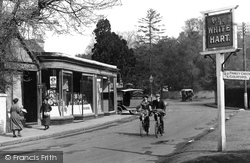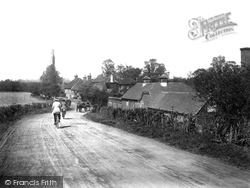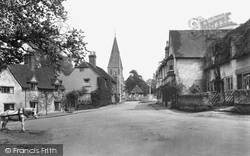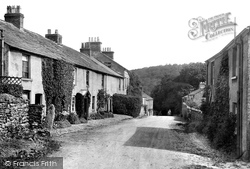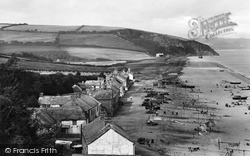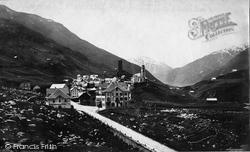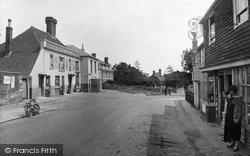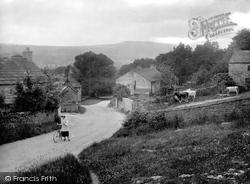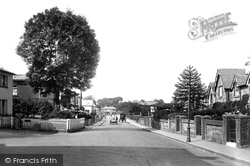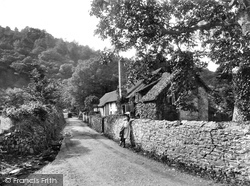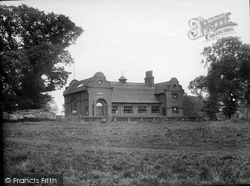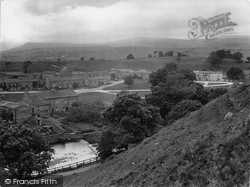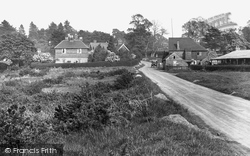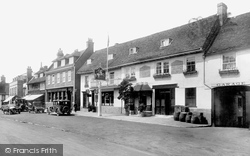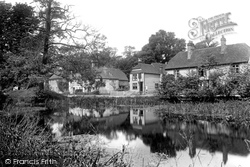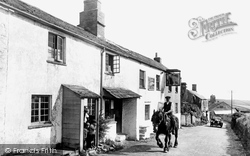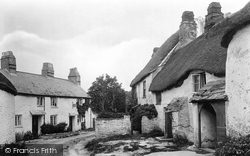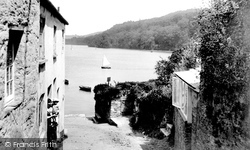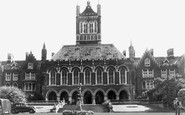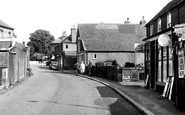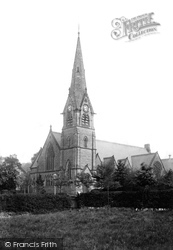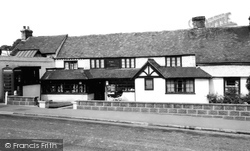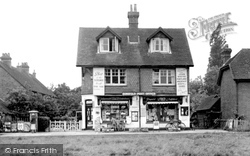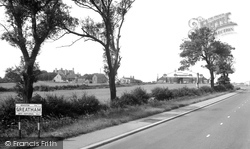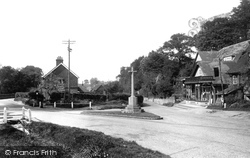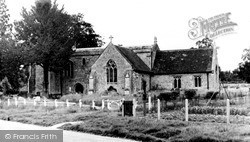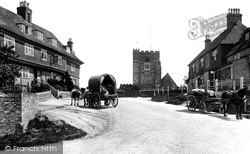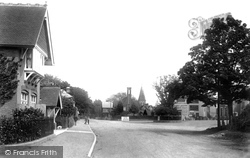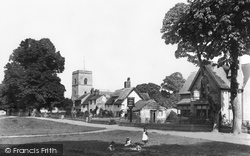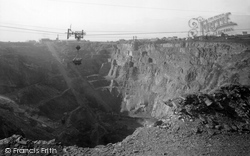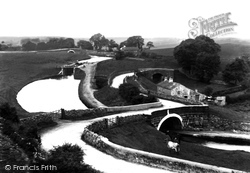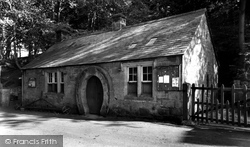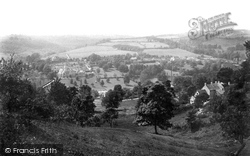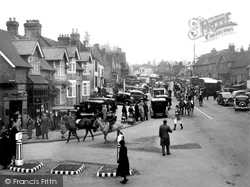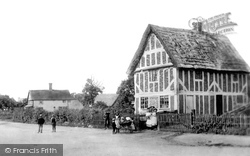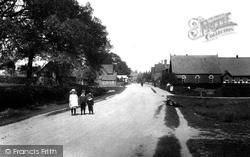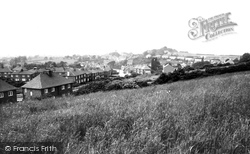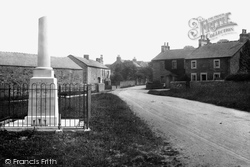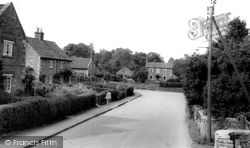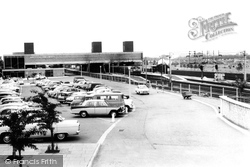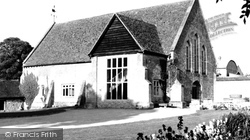Places
5 places found.
Those places high-lighted have photos. All locations may have maps, books and memories.
Photos
9,649 photos found. Showing results 2,421 to 2,440.
Maps
18 maps found.
Books
13 books found. Showing results 2,905 to 13.
Memories
4,612 memories found. Showing results 1,211 to 1,220.
Fig Pudding And A Monkey
I loved Bailiff Bridge - I was there from 1943 (when I was born a Baldwin) to 1961, when I came to college in Hull and settled nearby. I loved my school, with its large shelter in the playground; I loved Miss Ashton, ...Read more
A memory of Bailiff Bridge in 1949 by
Mottingham
I used regularly to walk up Mottingham Lane to visit my great aunt and her family who lived on the Horn Park Estate in and around Alnwick Road. Apparently, I threw a toy from my pram near the farm which my parents were never able to ...Read more
A memory of Mottingham by
Nurse Hampton
On August 13, 1961 I took up residence as a student nurse in Lindsay Smith House across from the hospital. It was the day the Berlin wall went up, and, as I recall, the day before the grouse shooting season began. I was 19 ...Read more
A memory of Virginia Water in 1961 by
Childhood
I was born at Peartree Cottage which was half way down the high street. For a young boy growing up the war was one big adventure. The fire station was opposite our house and they made me some really great wooden toys. As kids ...Read more
A memory of Minster in 1930 by
Happy Memories
I joined the WRAC and was posted to JSSC in the beautiful village of Latimer in 1953, what a wonderful time that was. There were two of us arriving at JSSC on that April day and the first place we went to was the NAAFI. Up on the ...Read more
A memory of Latimer in 1953 by
Vintage
These memories really are 1944 to about 1953. The corner shop by the church was a favourite as they used to sell home made toffee when sweets were on ration. One character I can still see was Mr White the baker being taken home ...Read more
A memory of Minster in 1944 by
Long Lost Relatives
I remember going to school in the village. My family were all from the village and worked for JCB, maybe someone knows my family, the Tompkinsons. It would be nice to heare from someone who knows them or relatives, as I have not been back for 20 years.
A memory of Stramshall in 1957 by
Growing Up In The Old Marchwood
I moved to Marchwood in the mid 1960s, I was not very old. We lived in an old house on the edge of the village, called Glengarriff. The old house was pulled down many years ago. I attended Marchwood Primary ...Read more
A memory of Marchwood
Troedy The Place Of My Birth
Firstly, Troedy was in Glamorgan not Gwent or Monmouthshire as it was then known. However, the postal address was New Tredegar, Monmouthshire. I was born at 1 Chapel Road in my grandfather's house. Sam and Sarah ...Read more
A memory of Troedrhiwfuwch
1960s
We moved to the village in 1967 and lived in Garden Lane and Plas Maen. I have fond memories of the old school and childrens clubs in the village hall. I well remember when the fish and chip shop first opened in the village and people came ...Read more
A memory of Bodedern in 1966
Captions
5,016 captions found. Showing results 2,905 to 2,928.
Until Barclays Bank was built in 1904, the Methodist church had the only public clock in the village.
Immediately south-east of Lingfield lies the race course, founded in 1890, and beyond that is the next station on the railway line, Dormans.
Dunsfold, north-west of Alfold, has a very large rectangular green, and the parish church of about 1270 is half a mile to the west.
The ancient settlement of Greatham lies halfway between Wolviston and Hartlepool. The large building on the right, at the entrance to the village, has always been known as Sappers Corner.
This is the centre of this secluded little hamlet tucked away on the north side of Hurt Wood, with its modest stone war memorial isolated on a triangular green, opposite the village shop and post office
Oakley was within the medieval royal hunting forest of Bernwood - the king's hunting lodge cum palace was at Brill nearby. The name of the village means 'a clearing in the oak woods'.
This high village of the Weald looks out on a panoramic view of orchards and hopfields, although the foundation of its prosperity in the Middle Ages was based on weaving and iron-working.
The village stands on the border with the neighbouring county of Sussex. It occupies rising ground and offers fine views across the Weald.
Burwell means 'spring by the fort'. It was here at this fen-edge settlement that William the Conqueror and Geoffrey de Manderville made their defensive stand for the island of Ely.
Once a royal manor, until Henry II gave it to the Courtenays, the village of Sutton Courtenay has several notable buildings.
This famous slate quarry is the deepest in England, the result of centuries of work. Although the great days of the 19th century had passed, there were still over 300 men employed here in 1938.
Barnoldswick grew once the Leeds-Liverpool canal arrived around 1812. The local textile industry blossomed, and people moved into the village from the surrounding areas to work in the new mills.
Just six miles from the Borde, the village of Ford sits on gently rising ground on the right bank of the Till.
This view of the village on the side of the valley gives a glimpse on the left of the priory which William Leigh, who had just been converted to the Catholic faith, had built; the Dominicans moved into
Going north to the Godstone to Reigate road, that part of the A25 that runs along the greensand ridge south of the North Downs, we reach the village of Bletchingley.
Certainly many of the current properties in the village are thatched and show the form of construction used on the house in the foreground.
Three carefully posed children standing on one side of the road contrast with two other boys stretched out on the opposite verge.
Taken from Winney Hill, this photograph looks over Harthill in the northerly direction of Kiveton Park collieries.
On the village green, the memorial is mounted on to the pedestal of an old cross. The church of St Cuthbert is dedicated to that saint as he is thought to have stayed in the hamlet.
Here we see several more of the local ironstone cottages with their well kept and productive gardens. There is a fine crop of runner beans in one garden as well as the usual flowers.
The coming of the railway to Broxbourne in 1840 had further stimulated the growth of the village, and demand from London-bound commuters heading for Liverpool Street and St.
Barnoldswick grew once the Leeds-Liverpool canal arrived around 1812. The local textile industry blossomed, and people moved into the village from the surrounding areas to work in the new mills.
The tranquil village of Whitwell lies directly under the flightpath of aircraft landing at Luton Airport.
Its size indicates the former status of the produce belonging to the church that was stored there, harvested from land once owned by the bishopric of Worcester.
Places (5)
Photos (9649)
Memories (4612)
Books (13)
Maps (18)




